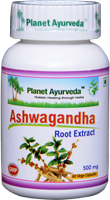



The term 'Migraine' stems from Galen's usage of hemicrania to describe a periodic disorder comprising paroxysmal blinding hemi cranial pain, vomiting, photophobia, recurrence at regular intervals, and relief by dark surroundings and sleep. Later, hemicrania was later corrupted into low Latin as hemigranea and migranea; eventually, the French translation, 'Migraine' gained acceptance in the eighteenth century and prevailed ever since.
Migraine can be defined as a paroxysmal ailment, accompanied by a severe headache, generally on one side of the head, and associated with disorders of the digestion, the liver and the vision. It usually occurs when a person is under great mental tension or has suddenly got over that state.
A migraine comes on suddenly. The head and neck muscles, reacting from continuous stress, become overworked. The tight muscles squeeze the arteries and reduce the blood flow. Then when the person relaxes suddenly, the constricted muscles expand, stretching the blood vessel walls. With each heart beat, the blood pushes through these vessels and expands them further, causing intense pain.
| Bramhi Capsules | Ashwagandha Capsules | Pitta Balance | Arogyavardhni vati | Medhya Churna |
 |
 |
 |
 |
 |
| 2 Bottles (120 Capsules) | 1 Bottle (60 Capsules) | 1 Bottle (60 Capsules) | 1 Bottle (120 Tablets) | 2 Packs (100gm Each) |
1 Month Supply |
||||
No side effects! Free Shipping and Handling Worldwide! |
||||
The above pack is for 30 days. Following is the dosage details:
There is a definite pattern of a migraine. The pain is on only one side of the head and often radiates from the eye. The right side of the head may be affected in one attack and the next time, the concentration of the pain may be on the left side. Migraine attacks are usually preceded by a short period of depression, irritability and loss of appetite.
Migraine can be due to many causes: indigestion, constipation, colds and flu, allergies, infection, low resistance power, anxiety or muscular tension. It can also be caused by low blood sugar, excessive intake of certain drugs, nutritional deficiency, consistent overwork, improper sleep and rest, excessive smoking, drinking and sexual indulgence. Migraine, a more severe type headache, is often related to congenital factors. Menstruation in women is also one of the important causes of Migraine. This form of migraine usually abates after menopause.
The main symptoms of migraine are pounding pain and nausea. The blood vessels on the affected side of the head become prominent and pulsating. As the headache develops, disturbed digestion becomes a marked feature.
| Type | Usual site | Age and Sex | Clinical features |
Migraine, with or without aura |
Frontotemporal, uni- or bilateral.
|
All ages; highest incidence in children and young adults. |
Onset after wakening; quelled by sleep. Duration: 6 hrs to 2 days. |
Cluster headache |
Lateralized, orbital or temporal.
|
All ages above 10; peaks at 30 - 50. |
Periodic attacks. |
Tension headache |
Generalized.
|
All ages; principally young adults. |
Nondescript, tight band like discomfort continuously. Exacerbations provoked by factors similar to migraine. |
Brain tumor |
Variable.
|
All ages, both sexes. |
Interrupts sleep, unrelieved by sleep. Exacerbated by orthostatic changes. Steadily worsening pain; may be preceded by days to weeks of nausea and vomiting. |
| Giant cell arteritis | Lateralized, temporal or occipital
|
Over 55 years, either sex. |
Marked scalp tenderness with superimposed jabbing and jolting pain. |
Lumbar puncture headache
|
Bifrontal and/or bioccipital. |
Over 10 years, either sex. |
Orthostatic; head pain present with patient sitting or standing and disappears in prone or supine positions. |
The food that triggers migraine are cold food items, tomatoes, lemon, citrus fruits, chocolates, ice creams, dairy products, white flour products, confectionary, rich cakes, pastries, sweets, refined cereals, tinned or preserved foods, pickles, sauces, coconut, tender coconut water, nuts, cold beverages etc. Some migraines worsen by food allergies. Avoid such foods. The patient should eat frequent small meals rather than a few large ones. Overeating should be avoided. Drinking plenty of warm water is advisable. Always have food freshly prepared and in a warm state. Some condiments and spices like garlic, asafetida, fenugreek seeds, cumin seeds, pepper etc. are helpful in relieving the symptoms.
Copyright © Krishna Herbal Company 2022. All Rights Reserved Powered By: Planet Ayurveda







